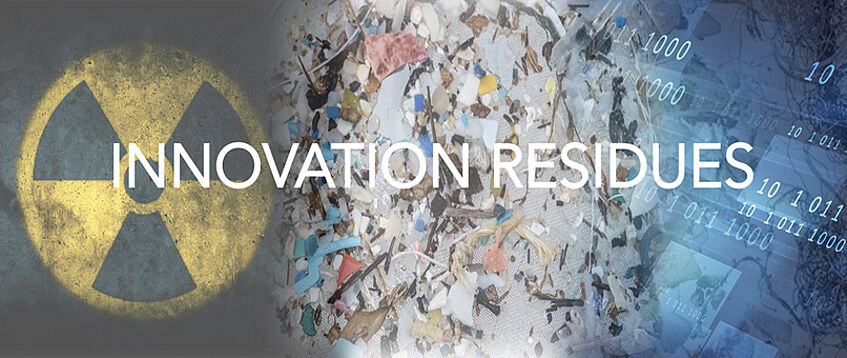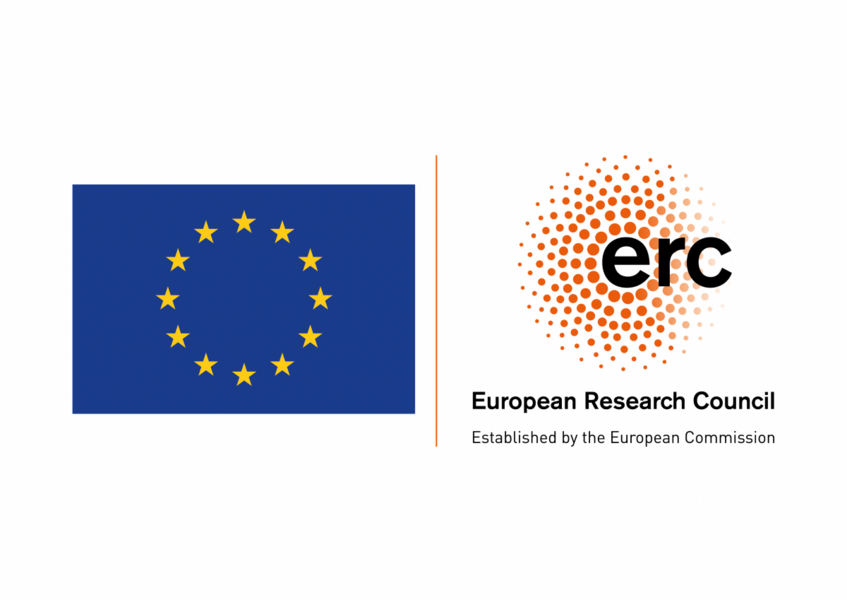Innovation Residues – Modes and infrastructures of caring for our longue-durée environmental futures (INNORES)
Duration: 1 January 2023 - 31 December 2027
Team: Ulrike Felt (PI), Carsten Horn, Noah Münster, Anastasia Nesbitt, Kaye Mathies, Sara Ortega, Ange Pottin, Livia Regen, Matteo Vivi, Michaela Zuckerhut,
Funding: European Commission, Horizon Europe - ERC Advanced Grant (GA 1010545)
For more details go to: http://www.innovation-residues.eu

Description
Innovation residues designate those left-behinds of innovations that profoundly shape human lives as they stay with us for a long time–well beyond moments of production and consumption, and well beyond the time horizons considered when assessing the worth of innovations. Residues are material witnesses to culture and practice of innovation, to diverse politics at work, and to the limited attention to long-term sustainable futures in a world predominantly shaped by short-term impact thinking.
Today, as technological innovations are seen as foundational to the future development of contemporary societies, the entanglements of innovation and society require closer scrutiny more than ever. INNORES offers a novel, empirically and theoretically rich approach to do so through a radically switched perspective. It does not put innovations themselves centre-stage, assigning to residues the role of potentially disruptive side-effects, but takes residues as the lens to study democratic innovation societies. It investigates how societies conceptualise, make sense of, live with, and care for innovation residues, and how this shapes their relations to innovation. Studying innovation societies through the complex networks and manifestations of residues, INNORES opens up new perspectives on how local choices and global impacts relate, on intergenerational justice and responsibility, on whose future imaginaries, values, and knowledges count when making choices, on how benefits and risks are distributed, and on modes and infrastructures of care for environmental futures.
INNORES engages with three very different kinds of residues–nuclear waste, microplastics and data waste. Using a specifically tailored qualitative, comparative mixed-method approach, it investigates them in different arenas spanning three European countries and the EU. Studying these particular sites in detail will then allow to trace out connections to and implications for innovation societies more generally.
For detailled information visit the project webpage: http://www.innovation-residues.eu
Related Publications (a selection)
- Papadaki-Anastasopoulou, Artemis and Felt, Ulrike (2021). Assembling plastic policy objects in the making of the EU single-use plastics directive, preprint, under review.
- Trauttmansdorff-Weinsberg, Paul and Felt Ulrike (2021). Between infrastructural experimentation and collective imagination: The digital transformation of the EU border, Science, Technology & Human Values, online first, doi: 10.1177/01622439211057523
- Felt, Ulrike, Öchsner, Susanne, and Rae, Rae (2020). The Making of Digital Health: Between Visions and Realizations. In J. Fritz & N. Tomaschek (Eds.), Digitaler Humanismus. Münster/New York: Waxmann Verlag. 89-101.
- Bayer, Florian and Felt, Ulrike (2019). Embracing the “atomic future” in post-World War II Austria. Technology and Culture, 60 (1): 165-191.
- Felt, Ulrike (2018). Living a Real-world Experiment: Post-Fukushima Imaginaries and Spatial Practices of “Containing the Nuclear”. In Ibo van de Poel, Lotte Asveld and Donna Mehos (eds.), Experimentation beyond the laboratory: new perspectives on technology in society (Farnham: Ashgate): 49-78.
- Felt, Ulrike (2018). Responsible Research and Innovation. In Sarah Gibbon, Barbara Prainsack, Stephen Hilgartner and Janette Lamoreaux (eds.) Handbook of Genomics, Health and Society. (London/New York: Routledge): 108-116.
- Felt, Ulrike, Schumann, Simone, Schwarz, Claudia (2015) (Re)assembling Natures, Cultures and (Nano)technologies in Public Engagement. Science as Culture, 24 (4): 458-483.
- Felt, Ulrike (2015) Keeping Technologies Out: Sociotechnical imaginaries and the formation of Austria's technopolitical identity. In Sheila Jasanoff and Sang-Hyun Kim (Eds) Dreamscapes of Modernity: Sociotechnical Imaginaries and the Fabrication of Power. (Chicago: Chicago University Press): 103-125.
- Felt, Ulrike (2015) Social science expertise in European innovation policy. In Wilsdon, James and Robert Doubleday (eds.) Future Directions for Scientific Advice in Europa. (Cambridge: Center for Science and Policy): 125-134.

